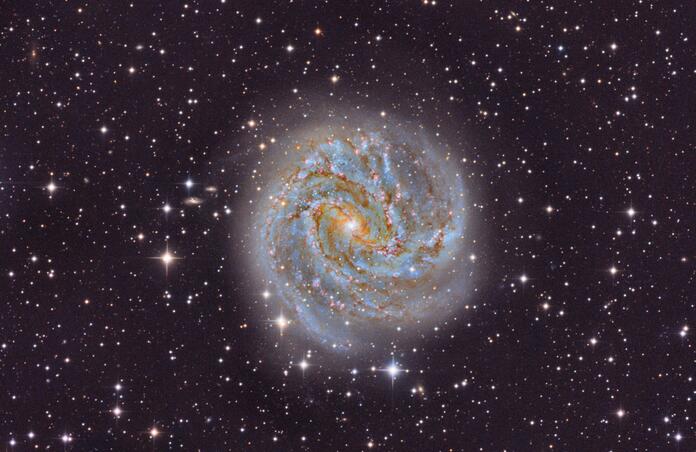Astrometry Basics

Most, if not all of the current top astro imaging capture software (SGP, N.I.N.A) comes with functionality to plate solve an image. Plate solving is used to convey positioning information to you mount so that it knows where your telescope is pointing and how it is oriented with the image you’re attempting to get. Plate solving uses astrometry, the science of measuring the positions and motions of celestial objects to do its work. Astro imagers and observers should have a good understanding of astrometry as much of our imaging and processing work relies on its principles.
Astrometry has been around for many centuries since Hipparchus created the first known star catalog sometime during his life (190 BCE to 120 BCE) which was referenced in Ptolemy’s Almagest, published in the 2nd century. In the 19th century, astrometry was accomplished mainly through the use of transit telescopes where the altitude and transit timing of stars across the celestial meridian was observed and recorded. These measurements provided a basic reference frame that could be used to calculate and base larger numbers of stars and star positions on.
As you might guess, astronomical coordinates Declination and Right Ascension must take the orientation of the rotational axis of Earth into account. They also must take into consideration our planet’s precession; this is the wobble our planet has created by the gravitational pull on from our own star and the gravitation pull from our moon. This wobble has a period of about 26,000 years of which we’re now about in the middle of; in another 12,000 years or so, the celestial pole will not be near the star Polaris but near the brightest star in the constellation Lyra, which is Vega. Because of precession, our planet’s rotation and it’s movement through space, there is a parallax shift of the stars we see as our planet orbits our own star. Both the Declination and Right Ascension of the stars and other objects we see in space change position over time.
The problem then, becomes the apparent or proper motion of almost all of stars we view. Generally, stars take decades or centuries to move even 1 arc second of position; unless you have accurate star positions separated by decades you do not know what stars have large position changes and which ones do not move very much.
When measurements for a fundamental star catalog are made, the data contains direct measurements of star positions relative to our planet’s orientation on the date of the observation. The data for the measurements taken only applies to that particular date; this is called the epoch of the observation. You may have noticed that many current star charts refer to the J2000 epoch. This is the current fundamental reference star catalog from January 2000 that the star chart is using and the positions listed have been calculated from that epoch.
When we use plate solving on an image, the software takes the coordinate positions of all the stars in the image and compares them to an astronomical reference catalog that helps match the orientation of the stars in the image to the ones in the reference catalog. If or when a match is found, the coordinate positions of the stars in the image can be referenced as well as the target in the image. With this referenced information from the fundamental star catalog, you can now calculate the astrometric position of a star for any desired epoch.
Why is all this relevant? Astro imaging capture programs like Sequence Generator Pro use plate solving and star reference catalogs to determine where your mount (and hence your telescope) is actually pointing to and can help you make position corrections to get your desired target framed the way you want it to. And it can do this using the program’s automated functionality. Image processing software such as PixInsight use astrometry theory and star catalogs to know where in the sky your image was taken to be able to perform accurate color calibration on the image. Because of this, we should have a basic understanding of the theory behind all of this.
Stay safe, have a lot of fun if you decide to go after these targets, get your neighbors to turn off their lights at night and convince them to join in the fun….
References -
The Handbook of Astronomical Image Processing, 2nd Edition; Richard Berry, James Burnell; Willmann-Bell Inc. Publishers
Image Credits -
M83, The Southern Pinwheel Galaxy; Telescope Live 1-Click Bundled Observation LRGB Data using CHI-1 & Processed in PixInsight
